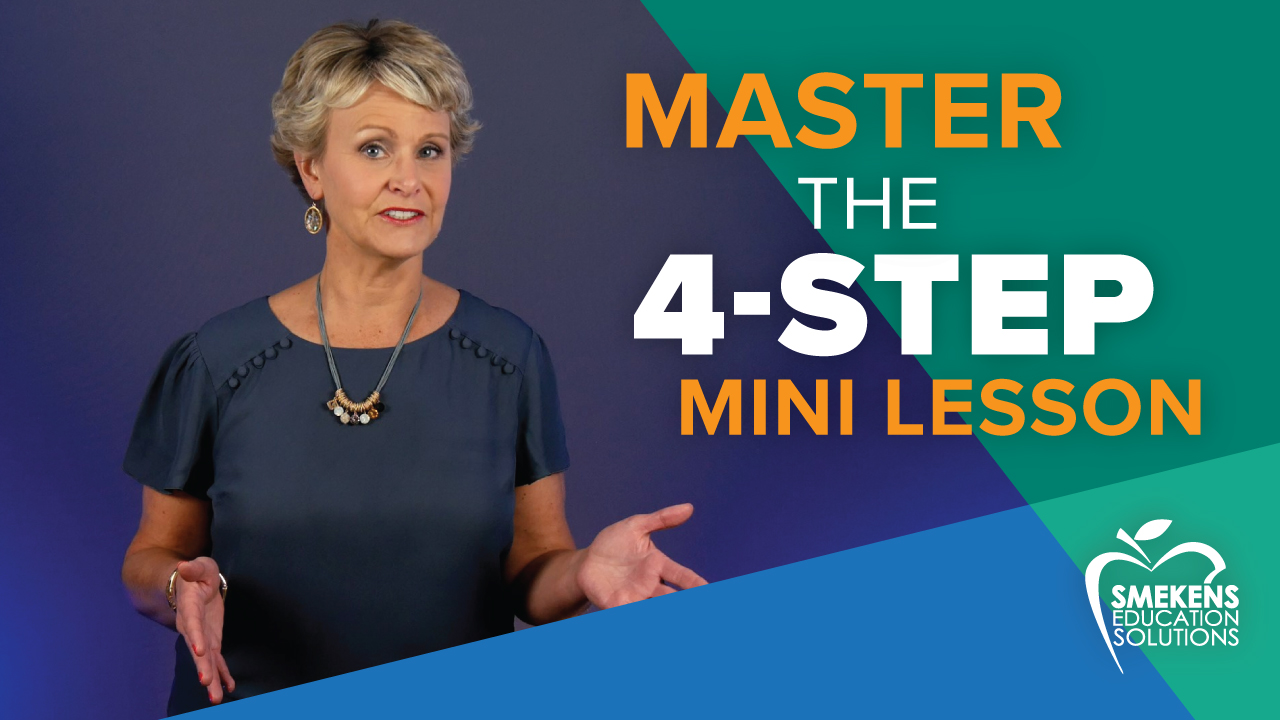Learning Center
writing
Maintain control during We-do experiences
All whole-class mini-lessons follow the same 4-step rhythm: 1) Introduce, 2) Instruct, 3) Interact, 4) Close. They are short, thus mini. They last 15 minutes or less.
If lessons are running long, first evaluate the content being presented. Often teachers attempt to deliver too much information within a single mini-lesson. The concept of a mini-lesson is not just that it’s mini in time; it’s mini in focus, too.
Assuming that the planned lesson is on a narrowly-focused skill, valuable time can be consumed in the mismanagement of Step 3–the interactive component. After explaining and modeling a new skill in Step 2, all mini-lessons should include a We-do opportunity for students to experience the skill during the lesson. However, this doesn’t necessarily mean teachers relinquish control to the students.
When teachers “share the pen” or ask a student to come to the board and try the next example, that student now controls the floor…and the clock! If that individual takes a while to make his way to the board and/or share his thought, then precious minutes are lost. In addition, all the kids that weren’t called upon often tune out and become disengaged.
A more powerful way to involve students in a lesson would be to have all students participate in a short Turn & Talk. Such moments are initiated when the teacher poses a whole-class question in Step 3 (e.g., Let’s look at another example. What would the answer be in this situation?). Then direct students to “turn and talk.” Students immediately pivot to a peer and collaborate on an answer orally.
Keep Turn & Talks short
Be careful not to give students too much time to turn and talk. It’s a specific task that should cause students to quickly share their thoughts with a peer. If they don’t have an answer, then they pivot to hear their peer’s suggestion. Either way, in these instances, the Turn & Talk is only about 6-10 seconds long.
DISCLAIMER: Classrooms should absolutely include opportunities for students to discuss, ponder, consider, analyze, and generally pour over ideas. These much longer peer conversations do have a place in the classroom. However, in the mini-lesson, student interactions in Step 3 need to be efficient and effective. An efficient Turn & Talk offers such an experience.
Introduce the procedures
In order for students to dive immediately into a Turn & Talk, they need to know that it’s coming. In other words, introduce this code phrase explicitly. Let them know who their Turn & Talk partner is. If they are sitting in rows, it’s the student in front or behind or across from them. If their desks are clustered, then identify who their individual buddies are.
Stay at the front of the room
While students are turning and talking, don’t walk around! Remember, it’s only six seconds. If the teacher strays from the board, then the lesson tends to go long. Rather, stay at the front of the room and listen in as students quickly discuss an idea/answer.
After 6-10 seconds, declare “Back to me.” Again, explain to students this code phrase indicates that they should immediately stop talking, face forward, and be ready to share out.
This is when the teacher reveals ideas that were overheard during the Turn & Talk. (Another option might be to invite a couple of students to share their thinking orally.) If time allows, execute a second example and Turn & Talk opportunity.
The “Turn & Talk” and “Back to me” code phrases are essential ways to manage time and increase engagement during the interactive steps of a 15-minute mini-lesson. They allow for all students to experience 2-3 examples orally, which is significantly better than only 2-3 students each experiencing a single written example at the board.



